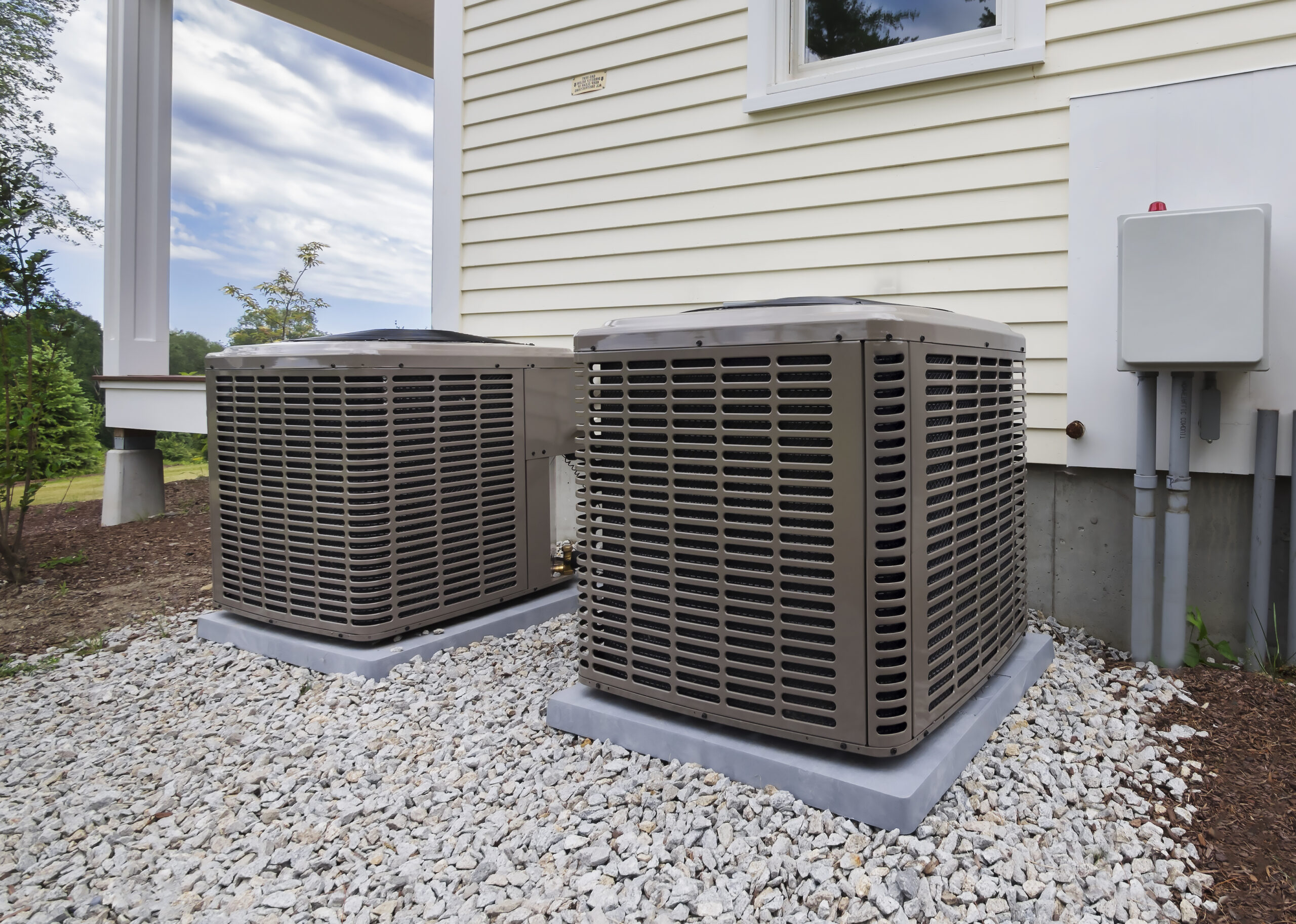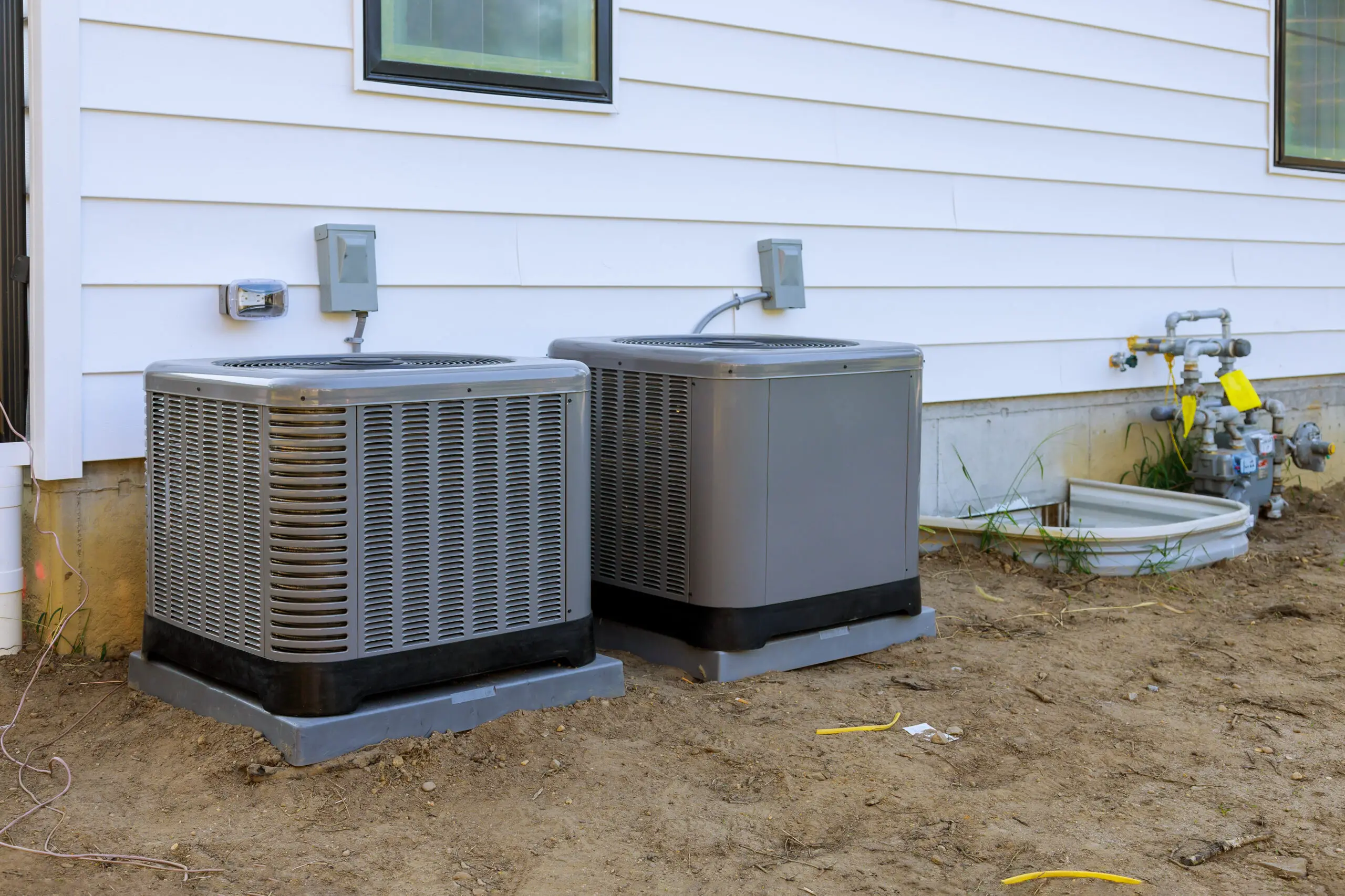Elevating your air conditioner off the ground can significantly impact its efficiency and lifespan. You’re not only protecting it from floods and debris but also ensuring better air circulation. In this article, you’ll discover the practical benefits of raising your AC unit and how it can save you money in the long run.
We’ll guide you through the process, from selecting the right materials to the actual setup. Whether you’re a DIY enthusiast or planning to call in the pros, you’ll find valuable insights to make an informed decision. Keep reading to learn how to give your air conditioner the lift it needs for optimal performance.
Suggested Products For Raising Your Air Conditioner
Why Should You Raise Your Air Conditioner?
Elevating your air conditioner is more than a mere precaution; it’s a strategic decision for homeowners aimed at ensuring the longevity and efficiency of their cooling systems. Here are compelling reasons why taking this step is beneficial:
- Prevents Flood Damage: Among the most practical reasons is the protection against water damage. In areas prone to flooding or heavy rains, elevated AC units remain safe from the potentially devastating impact of water.
- Promotes Better Air Flow: When raised, your air conditioner can experience improved air circulation. Efficient airflow is crucial for your unit’s performance, enhancing its ability to cool your home effectively.
- Shielding from Debris: Ground level can be a magnet for leaves, dirt, and other debris that can clog your system. By raising it, you’ll reduce the risk of debris-related malfunctions.
- Reduces Pest Intrusion: Pests look for warm spaces to nest, and your ground-level AC could be an inviting spot. Raising your unit helps deter these unwanted guests.
- Extends Equipment Lifespan: The cumulative benefit of protection from floods, better air circulation, less debris interference, and fewer pest problems contribute to an extended lifespan for your air conditioning system.
Real-life examples testify to these benefits. Consider the case study from a coastal town where homeowners typically elevate their AC units; service calls for flood-related repairs are markedly lower than in comparable areas without elevation measures.
The facts speak for themselves – raising your air conditioner is a wise choice for ensuring it runs more efficiently and lasts longer. Next, let’s explore how you can select the appropriate materials for this task.
Benefits of Elevating Your AC Unit
Elevating your air conditioner has tangible benefits that enhance both its performance and durability. Here’s a quick rundown of why lifting your AC off the ground is a smart move:
- Flood Protection: By raising your unit, you’re safeguarding it against water damage, particularly in areas prone to flooding. This proactive measure can save you from costly repairs or the need for a full replacement.
- Improved Air Circulation: An elevated position allows for more efficient air exchange. Your AC won’t have to work as hard to draw in air, leading to potentially lower energy costs and better cooling performance.
- Reduced Debris Buildup: Keeping the AC unit above ground level significantly lessens the accumulation of leaves, dirt, and other debris that can clog the system and reduce its efficiency.
- Pest Deterrence: Pests like ants and rodents find it harder to nest in or damage AC units that are raised. This helps avoid the associated repair expenses and hygiene concerns.
- Extended Lifespan: With a reduced risk of flood damage, lowered debris interference, and fewer pest invasions, your air conditioner can enjoy a lengthier, more reliable operational life.
Real-life case studies, particularly from homeowners in coastal areas, have underscored the practicality of these benefits. Elevated AC systems have shown remarkable resilience during extreme weather events, and have required fewer service calls related to debris and pest problems.
To capitalize on these advantages, it’s essential to choose the right materials and ensure a stable, secure elevation for your AC unit. Opting for corrosion-resistant supports and professional installation can maximize these benefits, keeping your air conditioning unit in top form year after year.
How to Select the Right Materials
When elevating your air conditioner, choosing the right materials is crucial for a stable and long-lasting setup. You’ll want to opt for materials that can withstand the elements and support the weight of your AC unit without sagging or cracking over time.
- Pressure-Treated Wood: Known for its durability and resistance to rot and insects, pressure-treated wood makes an excellent choice for the frame. Ensure the wood is labeled for ground contact to guarantee maximum longevity.
- PVC or Composite Decking: If you’re looking at a platform, PVC or composite decking boards provide a moisture-resistant surface that’s easy to clean and doesn’t require painting or staining.
- Galvanized or Stainless Steel: For hardware like screws and brackets, go for galvanized or stainless steel options. These materials resist rust and corrosion, essential for outdoor conditions.
- Concrete Blocks: For a more permanent solution, consider using concrete blocks as a base. They offer exceptional stability and are not prone to rot or insect damage.
Remember, the weight of the unit and the local climate should directly influence your material choice. In coastal areas, where salt spray accelerates corrosion, stainless steel would be more appropriate than galvanized options. Additionally, while higher initial costs may seem daunting, investing in quality materials upfront typically results in fewer maintenance issues down the line.
Real-life cases have demonstrated the effectiveness of these materials. For instance, in a flood-prone region, homeowners who used concrete pilings to elevate their AC systems found their units undamaged after heavy rainfalls, while neighbouring properties had to deal with costly repairs and replacements.
Steps for Raising Your Air Conditioner
Raising your air conditioner off the ground is an effective way to protect it from many environmental factors. Here is how you can elevate your unit successfully.
Determine Placement and Height
First, decide on the new location. Ensure it’s away from areas where water accumulates. Measure how high you want to raise the unit; typically, 12 to 24 inches off the ground is sufficient.
Gather Necessary Materials
Before beginning, collect all the materials mentioned previously. Ensure that all materials, like pressure-treated wood and concrete blocks, are rated for outdoor use and capable of supporting the weight of your air conditioner.
Construct a Solid Frame
- Start by building a sturdy frame using the pressure-treated wood.
- Make sure each joint is secured with galvanized or stainless steel hardware to prevent rust and decay.
Assemble the Platform
Once your frame is ready, attach the PVC or composite decking to the top securely. It will serve as the platform on which your air conditioner will be placed.
Lift and Secure the Air Conditioner
- With help, carefully lift your air conditioner onto the new platform.
- Check that it’s level, as an unbalanced unit can lead to operational issues.
- For added stability, fasten the air conditioner to the platform using appropriate brackets or strapping.
Homeowners who have followed these steps have experienced consistent air conditioner performance and extended equipment lifespan. For instance, those in coastal regions often raise their units well above the standard height to account for potential storm surges, finding their foresight rewarded with a markedly reduced risk of water damage.
Remember to regularly inspect the elevation setup for any signs of wear or damage, ensuring your air conditioner remains safely and effectively raised off the ground.
Tips for DIY Installation
When you’re ready to take on the task of elevating your air conditioner, remember that a successful DIY installation hinges on careful planning and precise execution. Here’s a run-through of expert advice to guide you through the process.
- Assess Your Skill Level – Be honest about your DIY skills. Installing an AC platform involves measuring, sawing, and using power tools. If you’re not up to the task, there’s no shame in calling a professional.
- Check for Utility Lines – Before digging or drilling, ensure there are no underground utility lines. Contact your local utility company for a check to avoid costly and dangerous mishaps.
- Secure the Right Tools and Materials – Quality tools make a difference. Here’s a quick list to get you started:
- Follow a Step-by-Step Guide – Use a detailed guide or watch instructional videos that cover each step. Precision in cutting and assembling your platform is crucial.
- Allocate Enough Time – Don’t rush the job. Allocate a full day or a weekend to ensure you can work through the steps meticulously.
- Test the Stability – Before placing your AC unit on the platform, test its stability. Apply pressure to various points to check for any give or wobbling.
Remember, raising your air conditioner off the ground is a project that pays off. Improvements in efficiency and lifespan are well within your reach when you install with diligence and attention to detail. Regular maintenance and inspection remain key to sustaining those benefits over time. Keep these tips in hand and tackle your project with confidence.
When to Call in the Professionals
Sometimes, DIY solutions are not enough when it comes to home improvements—and that’s especially true for tasks like raising your air conditioner. Here’s how you’ll know when it’s time to call in the professionals.
Assess the Complexity of the Installation
- If the project requires complex electrical work
- When the area is prone to severe weather conditions, necessitating a robust installation
- If local regulations require professional certification or inspection
Spot the Signs for Expert Help
- You’re unsure about the structural integrity of the raised platform
- The unit is oversized or uniquely shaped, making it challenging to balance
- You encounter unexpected obstacles, such as deeply rooted trees or sloped ground
Benefits of Professional Installation
Hiring a professional ensures that the installation is completed safely and to a high standard. Professionals bring:
- Expertise in local building codes and permits
- High-quality tools and materials tailored for specific AC models
- Warranty and insurance that safeguard your investment
Remember: If raising your air conditioner off the ground feels overwhelming, or safety concerns arise at any point, it’s time to bring in the experts. It’s better to incur the cost of a professional service than to risk damage to your AC unit, your property, or yourself.
Conclusion
Elevating your air conditioner is a smart move to enhance its performance and longevity. You’ve learned the importance of preparing adequately and ensuring the stability of your platform. Remember, it’s crucial to assess your capabilities honestly and not shy away from enlisting professional help when necessary. By doing so, you safeguard your investment and gain peace of mind. Whether you tackle the task yourself or call in the experts, maintaining your AC unit properly will keep it running smoothly for years to come.
Related Posts:
- Slash Air Conditioner Costs: Tips to Enhance…
- Upgrade Home Living with ComfortPlan: Smart Savings…
- Understanding Central Heating and Cooling Systems…
- Essential Guide to Pool Heater Gas Line Installation…
- Top Barrie Heating and Cooling Tips for Year-Round…
- Understanding Geothermal Heating and Cooling for Homeowners





